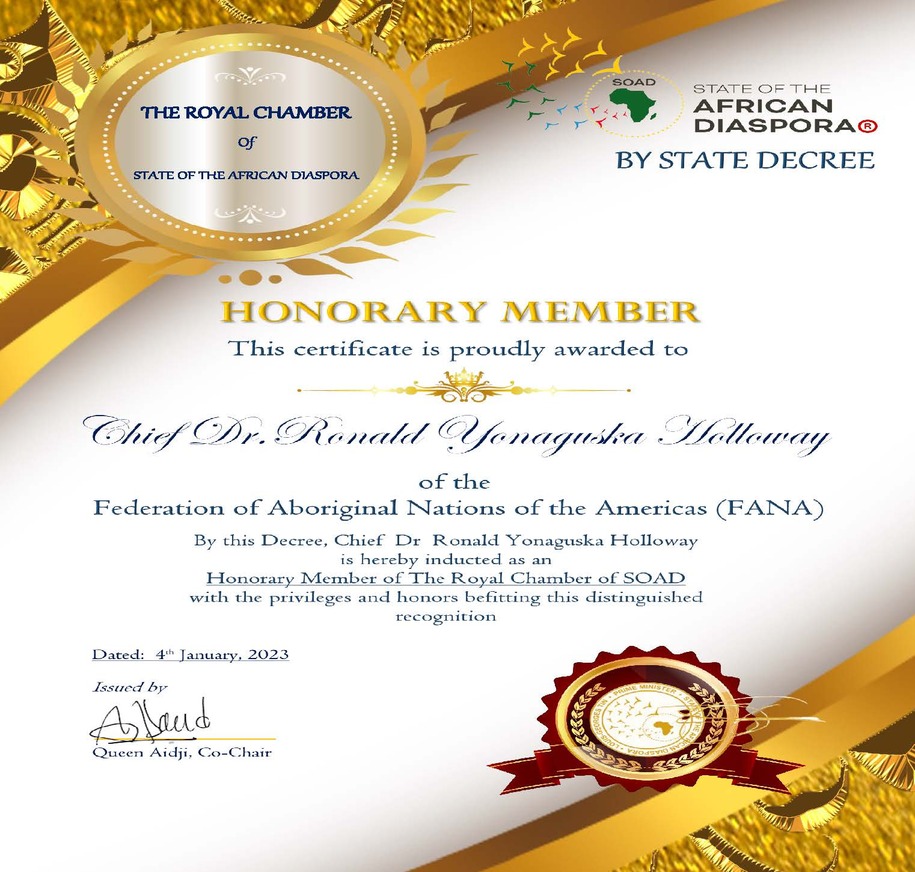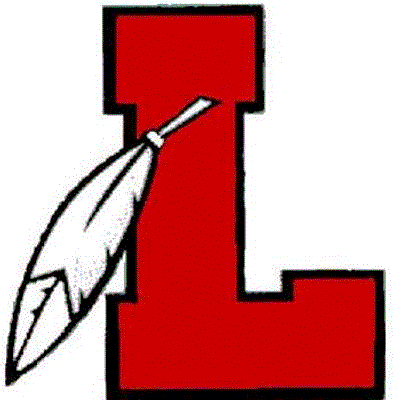PressReader.com – Digital Newspaper & Magazine Subscriptions Continue reading
Category: Lenni Lenape

New Paltz Central School District | Today, students at the Middle School, Lenape, and Duzine Elementary were treated to interactive, fun, and engaging assemblies with DP… | Instagram Add a new device”,”1_572460b539878eceb021da6f0ba4ad27″:”Search in conversation”,”1_588c13ae9c29e4cad57ff0623473419b”:”You can’t message this group”,”1_59e4d389c284d58c6a7006f6b0562811″:”Photo reminders”,”1_5a928f58cc901c2f036154287466ac52″:”AI-assisted message”,”1_5af74bfaddbfdad2526294491119b1ac”:”Call notifications”,”1_5b15ff8357f34309683c127f15840806″:”Chat plugin”,”1_5b4abffee3f305389a50710f7d485df8″:”Introducing AI stickers”,”1_5db467841ea204babe44c0bb4275c013″:”Message sent”,”1_5dbfacce1399e2f5cb7a6380beba0d09″:”This may take a moment…”,”1_67045d680945154400cf43a419e4ff9b”:”Please update your app”,”1_6831028223b7159f4a16a762309aeda5″:”Invite with a link”,”1_68667c64d4e948188b48f13c7b8324c0″:”Open Facebook app”,”1_69b4fbe4cc084fbff4fcf68d2f9d5fed”:”Charge your Bluetooth keys regularly.”,”1_6cd66115c7adbd7d8d450aaa8a5015d9″:”Contact phone number”,”1_74630a0214a11fa5068b0655daafe2de”:”Facebook user”,”1_752a4442f6eb09a9c79427caefd174c5″:”4 things to know about your information”,”1_76f971d0cf5dc8a40e43aa6592bf6015″:”{num_activities} activities”,”1_79cb46c945b63a0e9c8bd77518fd38f0″:”Add a profile picture”,”1_7a4acef2efaf880fb516077a756bea63″:”Image ID not returned.”,”1_8842669d806d74dfddee6ca515f2d8db”:”Look up info”,”1_8c442034b2e9c1bcc394eb6907b1d510″:”You’ll need to log in with Workplace to continue this video chat.”,”1_92469592130a0e85a5e996fa12296099″:”Account details”,”1_9dbc389a7657e7c498fe3cd2e8c903b9″:”Messenger preview”,”1_a02773f3eb15c1a027aacc96b97f526f”:”Invalid link”,”1_a2a5724aff5a7cca2d69a4e30e754431″:”Open System Preferences, then use the Security & Privacy controls to grant Workplace Chat access to the camera and microphone. You may need to restart the app for the settings to be applied.”,”1_aa3f089a4051c1e5ed29b0473ecb462c”:”Last name”,”1_aa408b4afeb14b97cfcc9915842b0b00″:”Confirm your identity”,”1_aa542254b59b7d679b6fdb93590402d3″:”Show picture-in-picture”,”1_b2fcaaf664421e83c164b2db208e6c2b”:”Dance party”,”1_bac81400de6624c1e42b308333c30946″:”Move to grid”,”1_beebce762afa64542777f56c09d80178″:”How to add friends on Messenger Kids”,”1_c0a187c52a5eda47cc616d9da9d48264″:”This lets you play Apple Music tracks, add tracks to your music library and more.”,”1_c0bf6a1e1c71e84db2d85d977ea0352c”:”You asked to chat with {name1}.”,”1_c470052944bf04f16919dc993025b1f3″:”Send separately”,”1_c65fba5a9f5914e3837eddb303417521″:”Placed on {date} u00b7 Canceled”,”1_c70d03f023ad810666fb2b89f962b34f”:”Blue/yellow”,”1_c995f1a5f939c822beefb3ff278bf59c”:”Thanks for being a superstar in this chat!”,”1_cd4fecb8aead25c0effd4ac632f98755″:”Cut over this chat to E2EE”,”1_d138dd68d66991762d0960a448c9dbf1″:”Chat members”,”1_d2306e12f55ac0dad00099ff94a9ecce”:”Install Workplace Chat audio sharing software?”,”1_d2abcef26824c99a9b7b66ebfd5b36a8″:”Manage folders”,”1_d47fd6e064b6d1afcb5e5d3674dff1e2″:”Start chatting”,”1_d757e02fa81fb3f8bb93135f107c6516″:”Test speaker”,”1_db1d708e4daa1d62b46287504eae8acc”:”This video can’t be sent”,”1_df5b853bbb16433e2ce5f781de7d297b”:”Squad hang”,”1_e4cad6566ee6fa7548d52ba7824506c0″:”Remove address”,”1_e67d8767d558befbca8c04d5b99d91d9″:”Draw a necklace”,”1_e811fc5925e4dcd78c046551cb24e889″:”This chat will show as unread”,”1_ed32b0c87ff94ede7145d9b17ba192ba”:”View {remainingCount} more photos”,”1_ee45d6f16d585bfe6cebb6800c4822d4″:”Add to her picture”,”1_f5bffa9a6c448e63ca61155760dca5fd”:”No messages”,”1_f6ffd6ae71c283f8aec7c7bc2cbfa289″:”Open audio device selector menu”,”1_fc4f960e763c5eedcbf5c27cf0411d4b”:”{name1} wants to add {lastPendingKifTargetName} as a friend”,”1_fe319617901612fc3c881e2d69ade21d”:”Choose kids for {name1}, {name2} and {name count} others to chat with”}},551],[“BarcelonaCrossMetaCampaignTokens”,[],{“mweb_app_header”:”AQGz7OjSwCyiNAjUdvdj3058fRs8C4AT7MogLkIyCMbtuEM”,”ig_desktop_nav”:”AQGzdQauGycWQnTNOgLvdb86ixKNZQQW5x2etl-tApmTmGA”,”ig_mobile_nav”:”AQGzljETqoKyv7iG5QW2gzgcEoBp65lW22XuKB-VuYh3TX4″,”ig_web_joiner_badge_to_profile”:”AQGzYyRKkO7I_hTe5bf-Pb4iSoqePDdoZ2EHAsxFCR6JDNk”,”ig_web_joiner_badge_with_notif”:”AQGzGpSmsrZvgsd7mAop_EIHrnzkF4nVvsq65Ww8yJcp-H4″,”seo”:”AQGz0SHoKyO-47pH44Bhqtn42U4oGX5YFmyzP6j57coyAlU”,”invite”:”AQGzTeOGWE7V3wUQflARx95diqexyI7BwNsG162QTnb8c2c”,”invite_on_threads_as”:”AQGzz0locgjFJScvb-usbQHI6UxqQdsC9_1XkaDpJPQUoDA”,”invite_lets_connect”:”AQGzILEpCfuWwijDWbsPjzZIaqygiFuag0pC-bqVWc_5Yfs”,”invite_join_me”:”AQGzvtdg3edU5mu1KVffPjAzc9KG_Xm0OdidCKrgFahyjMo”,”copy_link”:”AQGz4kltRNIpYPUAWdXv9qeLtf0XPgV7_sjkvrrVLGxCnQ”},7651],[“YouthRegulationConfig”,[],{“config”:null},7506],[“WebDevicePerfClassData”,[],{“deviceLevel”:”unknown”,”yearClass”:null},3665],[“PolarisSiteData”,[],{“country_code”:”IR”,”device_id”:”19AC771B-70CA-47FE-93A7-31402E138C4B”,”machine_id”:”Z4QnzAAEAAHUB1a-k9ibKi9mJPnm”,”send_device_id_header”:true,”e2e_config”:null,”use_server_machine_id”:false},7369],[“PolarisIgLiteLoggedOutUpsellsExposure”,[],{“global_4gb_and_above_enabled”:false},7928],[“AnalyticsCoreData”,[],{“device_id”:”$^|Acb2RL7g23F9fx8yykFjB8hesEOjTFgqXjgJJWqJ6iNsDmlVUJ0GUpvLv2cmYszn5Ih_n_SSbput_hvT0GpZtYOfgw3RSXj87x39PRN2n4taUQ8uPQHyaS0|19AC771B-70CA-47FE-93A7-31402E138C4B”,”app_id”:”936619743392459″,”enable_bladerunner”:false,”enable_ack”:true,”push_phase”:”C3″,”enable_observer”:false,”enable_cmcd_observer”:false,”enable_dataloss_timer”:false,”enable_fallback_for_br”:true,”queue_activation_experiment”:false,”max_delay_br_queue”:60000,”max_delay_br_queue_immediate”:3,”max_delay_br_init_not_complete”:3000,”consents”:{},”app_universe”:2,”br_stateful_migration_on”:false,”enable_non_fb_br_stateless_by_default”:false,”use_falco_as_mutex_key”:false,”is_intern”:false,”enable_session_id_bug_fix”:true,”identity”:{“appScopedIdentity”:””,”claim”:”hmac.AR0m9T1G_cOAe6p04Jqf3OFJz0TII0vOOBnQ3JFM8GGtrmgI”},”app_version”:”1.0.0″},5237]],”instances”:[[“__inst_af5d41d9_0_0_/0”,[“XIGCometRoutedRootConfigBuilder”],[{“service_worker_uri”:”/www-service-worker.js?s=push&__d=www”,”pwa_share_service_worker_uri”:”/www-service-worker.js?s=push&pwa_share=1″,”ssr_enabled”:false}],1]],”require”:[[“CometPrelude”],[“JSScheduler”],[“ServerJS”],[“ScheduledApplyEach”],[“CometResourceScheduler”],[“PolarisPostRoot.entrypoint”],[“PolarisPostRoot.react”],[“CometPlatformRootClient”,”initialize”,[“__inst_af5d41d9_0_0_/0″,”RequireDeferredReference”],[{“ConfigOrBuilder”:{“__m”:”__inst_af5d41d9_0_0_/0″},”backgroundRouteInfo”:{“route”:null,”timeSpentMetaData”:null},”additional_roots”:[],”client_id”:”7459130640148173883″,”rootElementID”:”mount_0_0_/2″,”expectedPreloaders”:null,”initialRouteInfo”:{“route”:{“actorID”:”0″,”rootView”:{“allResources”:[{“__dr”:”PolarisPostRoot.entrypoint”},{“__dr”:”PolarisPostRoot.react”}],”resource”:{“__dr”:”PolarisPostRoot.react”},”props”:{“media_id”:”3541299566638268120″,”media_owner_id”:”57660410396″,”page_logging”:{“name”:”postPage”,”params”:{“page_id”:”postPage_3541299566638268120″,”owner_id”:”57660410396″}},”polaris_preload”:{“media”:{“expose”:false,”preloaderID”:”4843660214563139816″,”request”:{“method”:”GET”,”url”:”/api/v1/media/{media_id}/info/”,”params”:{“path”:{“media_id”:”3541299566638268120″}}},”preloadEnabledOnInit”:false,”preloadEnabledOnNav”:false},”comments”:{“expose”:false,”preloaderID”:”7788903694359766529″,”request”:{“method”:”GET”,”url”:”/api/v1/media/{media_id}/comments/”,”params”:{“path”:{“media_id”:”3541299566638268120″},”query”:{“can_support_threading”:true,”target_comment_id”:null,”permalink_enabled”:false}}},”preloadEnabledOnInit”:false,”preloadEnabledOnNav”:false},”related_media”:{“expose”:false,”preloaderID”:”311480819873502389″,”request”:{“method”:”GET”,”url”:”/api/v1/feed/user/{user_id}/”,”params”:{“path”:{“user_id”:”57660410396″},”query”:{“count”:7}}},”preloadEnabledOnInit”:false,”preloadEnabledOnNav”:false}},”qr”:false,”enable_seo_crawling_pool”:false,”should_fetch_related_users_async”:true,”should_increase_comment_previews”:false,”should_include_audio_in_chaining_posts”:true,”accessibility_caption”:null,”custom_en_creator_activation_upsell_header_text”:null,”custom_en_creator_activation_upsell_body_text”:null,”should_show_end_of_video_signup”:false,”should_enable_ios_global_sound”:false},”entryPoint”:{“__dr”:”PolarisPostRoot.entrypoint”}},”tracePolicy”:”polaris.postPage”,”meta”:{“title”:”New Paltz Central School District | ud83cudfc0 Today, students at the Middle School, Lenape, and Duzine Elementary were treated to interactive, fun, and engaging assemblies with DP… | Instagram”,”accessory”:null,”favicon”:null},”prefetchable”:true,”entityKeyConfig”:{“entity_type”:{“source”:”constant”,”value”:”post”},”entity_id”:{“source”:”param”,”value”:”shortcode”}},”hostableView”:{“allResources”:[{“__dr”:”PolarisPostRoot.entrypoint”},{“__dr”:”PolarisPostRoot.react”}],”resource”:{“__dr”:”PolarisPostRoot.react”},”props”:{“media_id”:”3541299566638268120″,”media_owner_id”:”57660410396″,”page_logging”:{“name”:”postPage”,”params”:{“page_id”:”postPage_3541299566638268120″,”owner_id”:”57660410396″}},”polaris_preload”:{“media”:{“expose”:false,”preloaderID”:”4843660214563139816″,”request”:{“method”:”GET”,”url”:”/api/v1/media/{media_id}/info/”,”params”:{“path”:{“media_id”:”3541299566638268120″}}},”preloadEnabledOnInit”:false,”preloadEnabledOnNav”:false},”comments”:{“expose”:false,”preloaderID”:”7788903694359766529″,”request”:{“method”:”GET”,”url”:”/api/v1/media/{media_id}/comments/”,”params”:{“path”:{“media_id”:”3541299566638268120″},”query”:{“can_support_threading”:true,”target_comment_id”:null,”permalink_enabled”:false}}},”preloadEnabledOnInit”:false,”preloadEnabledOnNav”:false},”related_media”:{“expose”:false,”preloaderID”:”311480819873502389″,”request”:{“method”:”GET”,”url”:”/api/v1/feed/user/{user_id}/”,”params”:{“path”:{“user_id”:”57660410396″},”query”:{“count”:7}}},”preloadEnabledOnInit”:false,”preloadEnabledOnNav”:false}},”qr”:false,”enable_seo_crawling_pool”:false,”should_fetch_related_users_async”:true,”should_increase_comment_previews”:false,”should_include_audio_in_chaining_posts”:true,”accessibility_caption”:null,”custom_en_creator_activation_upsell_header_text”:null,”custom_en_creator_activation_upsell_body_text”:null,”should_show_end_of_video_signup”:false,”should_enable_ios_global_sound”:false},”entryPoint”:{“__dr”:”PolarisPostRoot.entrypoint”}},”polarisRouteConfig”:{“hideBottomNavigation”:false,”mobileHeaderVariant”:”post_title”,”pageID”:”postPage”},”url”:”/newpaltz_csd/p/DElOTF4t_7Y/”,”params”:{“username”:”newpaltz_csd”,”permalink_key”:”p”,”shortcode”:”DElOTF4t_7Y”,”view”:null,”caption”:null,”q”:null,”chaining”:null,”img_index”:null,”slug”:null},”routePath”:”/{username}/{permalink_key}/{shortcode}/{?slug}/”},”timeSpentMetaData”:{“container_id”:”DElOTF4t_7Y”}},”qplEvents”:{“initial_load”:{“r”:1,”i”:553648129},”navigation”:{“r”:1,”i”:553648130}}}]],[“Bootloader”,”markComponentsAsImmediate”,[],[[“CometKeyCommandWrapperDialog.react”,”CometModifiedKeyCommandWrapperDialog.react”,”IGDSPro2ProDialog.react”,”PolarisCoauthorReviewDialog.react”,”VideoPlayerHTML5ApiCea608State”,”VideoPlayerHTML5ApiWebVttState”,”PolarisPostFastTagOptionsModal.react”,”PolarisPostFastGenAITransparencyModal.react”,”PolarisPostFastGenAITransparencyModal.next.react”,”PolarisBoostMediaIneligibleErrorDialog.react”,”IGWebBloksApp”,”PolarisPostFastAdDebugToolModal.react”,”PolarisPostFastGenAITransparencyZeroClickModal.next.react”,”PolarisCreateCollectionWithPostModal.react”,”PolarisPostFastAboutThisAccountModal.react”,”PolarisPostFastCopyModal.react”,”PolarisPostFastDeleteModal.react”,”PolarisPostFastEmbedModal.react”,”PolarisPostFastHideAdModal.react”,”PolarisPostFastOptionsModal.react”,”PolarisPostFastReportAdModal.react”,”PolarisPostFastReportModal.react”,”PolarisPostFastShareSheet.react”,”PolarisPostFastTaggedModal.react”,”PolarisPostFastUnfollowModal.react”,”PolarisPostFastViewAccountModal.react”,”PolarisPostFastWAISTModal.react”,”PolarisPostFavoritesModal.react”,”PolarisBoostMusicErrorDialog.react”,”PolarisPostFastAdRemovedModal.react”,”PolarisPostFastAdRemovalErrorModal.react”,”PolarisPostFastLoadingModal.react”,”IGDSecureShareSheetDialog.react”,”PolarisPostFastOptionsModal.next.react”,”PolarisPostFastAdDebugToolModal.next.react”,”PolarisPostFastAdRemovedModal.next.react”,”PolarisPostFastHideAdModal.next.react”,”PolarisPostFastReportAdModal.next.react”,”PolarisPostFastReportModal.next.react”,”PolarisPostFastShareSheet.next.react”,”PolarisPostFastTaggedModal.next.react”,”PolarisPostFastUnfollowModal.next.react”,”PolarisPostFastViewAccountModal.next.react”,”PolarisPostFastWAISTModal.next.react”,”PolarisPostFastTagOptionsModal.next.react”,”PolarisPostFastAboutThisAccountModal.next.react”,”PolarisPostFastCopyModal.next.react”,”PolarisPostFastDeleteModal.next.react”,”PolarisPostFastEmbedModal.next.react”,”PolarisUserHoverCardContentV2.react”,”PolarisBoostNotDeliveringDialog.react”,”PolarisPostFastAllowCommentsModal.next.react”,”PolarisVideoVariantSelector.react”,”PolarisInformTreatmentSensitivityDetailsDialog.react”,”VideoPlayerEmsg”]]],[“Bootloader”,”markComponentsAsImmediate”,[],[[“CometErrorRoot.react”]]],[“RequireDeferredReference”,”unblock”,[],[[“PolarisPostRoot.entrypoint”,”PolarisPostRoot.react”],”sd”]],[“RequireDeferredReference”,”unblock”,[],[[“PolarisPostRoot.entrypoint”,”PolarisPostRoot.react”],”css”]]]}},{“__bbox”:{“require”:[[“qplTimingsServerJS”,null,null,[“7459130640148173883″,”tierOneBeforeScheduler”]]]}},{“__bbox”:{“require”:[[“qplTimingsServerJS”,null,null,[“7459130640148173883″,”tierOneInsideScheduler”]]]}}]]]}]]>
Continue reading

Celebrating 400 Years of the Greatest City in the World
January 6, 2025
2025 marks a historic occasion — our city’s 400th anniversary. It marks four centuries since the first European settlement of Manhattan in 1625, on land then known as Lenapehoking, the homeland of the Lenape people. The tiny Dutch colony began as New Amsterdam and then changed to New York when the English took control and expanded rapidly. A century ago, its boundaries increased beyond the island of Manhattan to encompass the Bronx, Brooklyn, Queens, and Staten Island.
To celebrate our city’s 400th anniversary, we are proud to announce the launch of our “Founded By NYC” campaign, which focuses on commemorating and celebrating our city’s 400th birthday and honoring the Indigenous communities that came long before. The campaign highlights contributions from New York City that have shaped our nation and affirmed our country’s place in the world.
Our website, FoundedByNYC.com, features events and activities that showcase our city’s amazing 400-year history. You can also sign up for our newsletter, which will keep you up to date on events in the five boroughs and submit information about your own events that illustrate New York City’s past so that we can showcase it on our calendar.
Even as we look forward and celebrate all our great city has to offer, our administration is deeply committed to acknowledging and engaging with our city’s complex past. That is why we met with Chief Brad KillsCrow of the Delaware Tribe of Indians at Gracie Mansion and have proclaimed November 20 as “Lenape Heritage Day.” The Lenape people are the original inhabitants of this region, we acknowledge the pain they have experienced and the great contributions that have made — and continue to make…

Wednesday, Jan. 8
BCSL
Medford Tech 2, Burlington Township 2 – Box Score
Cinnaminson 4, Northern Burlington 0 – Box Score
BIG NORTH
Ramapo 5, Ridgefield Park 2 – Box Score
Pascack Hills 7, Paterson Kennedy 0 – Box Score
Don Bosco Prep 7, West Milford 0 – Box Score
Mahwah 7, Clifton 0 – Box Score
Ridgewood 7, Cliffside Park 0 – Box Score
Dumont 5, Northern Highlands 2 – Box Score
Hackensack 7, Dwight-Morrow 0 – Box Score
Bergen Tech 7, Bergen Catholic 0 – Box Score
Fort Lee 5, Paramus 2 – Box Score
GMC
Piscataway 4, New Brunswick 0 – Box Score
HCIAL
BelovED Charter 7, Lincoln 0 – Box Score
Hudson Catholic 4, Kearny 3 – Box Score
Snyder 5, Bayonne 2 – Box Score
St. Peter’s Prep 7, McNair 0 – Box Score
NJAC
Newton 7, Hopatcong 0 – Box Score
Sussex Tech 5, Vernon 2 – Box Score
Jefferson 7, Sparta 0 – Box Score
Seton Hall Prep 5, Montville 2 – Box Score
OLYMPIC
Eastern 3, Lenape 1 – Box Score
Cherry Hill East 3, Cherokee 1 – Box Score
Seneca 4, St. Augustine 0 – Box Score
Cherry Hill West 3, Shawnee 1 – Box Score
SEC
Nutley 7, Montclair 0 – Box Score
Seton Hall Prep 5, Montville 2 – Box Score
University 1976, Newark East Side 0 – Box Score
Bloomfield 7, Belleville 0 – Box Score
SHORE
Colts Neck 2, Jackson Liberty 1 – Box Score
Toms River North 3, Central Regional 0 – Box Score
Middletown South 3, Long Branch 0 – Box Score
Christian Brothers…

As many of you know, I have been writing articles about The Federation of Aboriginal Nations of the Americas (addressed as FANA) and the SandHill Band of Lenape and Cherokee Indians (NY, NJ, PA), (addressed as the SandHill) since 2021.
.
I have taken the readers on an Aboriginal Federation’s evolution journey from the unknown to becoming a globally recognized entity.
Along the way, readers have had a chance to learn about the different treaties and agreements that FANA has entered into and its establishment of global relationships. Over the years, I have written about some of the Federation’s members and their chosen paths.
Today I need to bring everyone back to an article I wrote on July 21, 2023. The article is titled “Federation of Aboriginal Nations of the Americas and SOAD Sign Historical Cooperation Agreement”
The article brings forth the historical similarities that the Indigenous people who had lived in Africa, and the indigenous people who lived in what would become the United States, experienced during the age of European colonization.
It addresses “a historic moment was slowly being made as FANA and SOAD began taking the first steps in bringing together “the global diasporas and indigenous peoples of the world” and have signed a cooperation agreement between them. The two signatories on the Cooperation Agreement are Dr. Louis–Georges Tin, Prime Minister of SOAD, and SandHill Band of Lenape and Cherokee Indians Principal Chief Dr. Ronald Yonaguska Holloway, Minister of International Affairs of FANA.”
I want to bring your attention to the above document titled Honorary Member of the Royal Chamber of SOAD that FANA’s Minister of International Affairs and its UN Ambassador Principal Chief Dr. Ronald Yonaguska Holloway of the SandHill recently received from SOAD’s Prime Minister last week.
The Certificate had…

– ADVERTISEMENT – 
![]()
 FILE PHOTO: An ice sculpture depicting U.S. President Donald Trump sits across the Hudson River from the United Nations headquarters in the Queens Borough of New York City, New York, U.S., September 30, 2020. REUTERS/Carlo Allegri/File Photo
FILE PHOTO: An ice sculpture depicting U.S. President Donald Trump sits across the Hudson River from the United Nations headquarters in the Queens Borough of New York City, New York, U.S., September 30, 2020. REUTERS/Carlo Allegri/File Photo
2025 marks a historic occasion — our city’s 400th anniversary. It marks four centuries since the first European settlement of Manhattan in 1625, on land then known as Lenapehoking, the homeland of the Lenape people. The tiny Dutch colony began as New Amsterdam and then changed to New York when the English took control and expanded rapidly. A century ago, its boundaries increased beyond the island of Manhattan to encompass the Bronx, Brooklyn, Queens, and Staten Island.
To celebrate our city’s 400th anniversary, we are proud to announce the launch of our “Founded By NYC” campaign, which focuses on commemorating and celebrating our city’s 400th birthday and honoring the Indigenous communities that came long before. The campaign highlights contributions from New York City that have shaped our nation and affirmed our country’s place in the world.
Our website, FoundedByNYC.com, features events and activities that showcase our city’s amazing 400-year history. You can also sign up for our newsletter, which will keep you up to date on events in the five boroughs and submit information about your own events that illustrate New York City’s past so that we can showcase it on our calendar.
Even as we look forward and celebrate all our great city has to offer, our administration is deeply committed to acknowledging and engaging with our city’s complex past. That is why we met with Chief Brad…
The congregation of the First Presbyterian Church of Lansdowne, Pennsylvania
LOUISVILLE — During worship on the final Sunday in Advent, First Presbyterian Church of Lansdowne, Pennsylvania, formally surrendered 15% of the proceeds from the recent sale of its church manse to descendants of the Lenape people, the Indigenous stewards of the land on which the church now stands. The 74-minute worship service can be viewed here.
“It is important for us to frame this act as a surrender — an acknowledgement that these funds are not ours to hold,” said the Rev. Jonathan Britt, the church’s pastor. “We cannot separate the resources we have from the colonial history that displaced the Lenape people, whose stewardship of this land was sacred and enduring. Surrendering these funds is a small but tangible step in repairing a fractured relationship and honoring the humanity and dignity of the Lenape people.”
Britt said the approximately $27,000 that was surrendered during the service on Dec. 22 was determined in conversation with Restorative Actions, an economic equity initiative born from the intersection of theology, justice and economics. The 15% of the manse’s sale proceeds represents not only a financial acknowledgement but a spiritual and moral response to the harm done to Indigenous communities, Britt noted.
During his Dec. 22 sermon, Britt drew from a devotion by the Rev. Dr. William Yoo of Columbia Theological Seminary published in “Boundless,” an anti-colonial Advent devotional published by Unbound. In his devotional, Yoo points out that abolitionists including William Lloyd Garrison lifted up Jesus’ ministry as an important reason for their advocacy. “When other Christians criticized him as an instigator of disorder whose activism imperiled the union of the Northern and Southern states, Garrison invited them to open their Bibles and read texts such as
Lenape Makes It 11 in a Row at Home

Suggested Video
Lenape won against Shawnee last Thursday with 60 points and they decided to stick to that point total again on Saturday. The Lenape Indians strolled past the Bishop Eustace Prep Crusaders with points to spare, taking the game 60-46. Winning may never get old, but the Indians sure are getting used to it with their third in a row.

Indians
| 01/04/25 vs Bishop Eustace Prep | 60-46 |
| 01/02/25 vs Shawnee | 60-32 |
| 12/17/24 vs Woodbury | 72-31 |
| 02/21/24 vs Atlantic City | 56-23 |
| 02/12/24 vs Willingboro | 78-20 |
| + 6 more games |
Lenape pushed their record up to 5-1 with the win, which was their 11th straight at home dating back to last season. They’ve dominated over that stretch too, winning by an average of 31.4 points. As for Bishop Eustace Prep, they are on a three-game losing streak that has dropped them down to 5-3.
Both teams are looking forward to the support of their home crowds in their upcoming games. Lenape will host Cherokee at 6:00 p.m. on Tuesday. Lenape has been dominant on offense recently, having racked up an incredible 176 points over their last three matchups. As for Bishop Eustace Prep, they will face off against Cherry Hill West at 7:00 p.m. on Tuesday.
Article generated by infoSentience based on data entered on MaxPreps

Saturday, Jan. 4
Big North Duals
At Passaic Tech
Semifinal round
Ramapo 46, Clifton 34 – Box Score
Wayne Valley 39, Passaic Tech 28 – Box Score
Final round
Wayne Valley 45, Ramapo 25 – Box Score
Also
River Dell 36, Fair Lawn 34 – Box Score
River Dell 59, Bergenfield 19 – Box Score
Pascack Valley 45, Paramus 29 – Box Score
Pascack Valley 56, Wayne Hills 15 – Box Score
Westwood 42, Paramus 28 – Box Score
Westwood 44, Wayne Hills 27 – Box Score
Blue Devil Duals
At Hammonton
Final round
Washington Township 42, Rancocas Valley 33 – Box Score
Also
Washington Township 62, Millville 15 – Box Score
Washington Township 77, Gateway 0 – Box Score
Rancocas Valley 53, Hammonton 28 – Box Score
Rancocas Valley 64, Pennsville 14 – Box Score
Gateway 41, Buena 30 – Box Score
Gateway 43, Winslow 29 – Box Score
Pennsville 42, Winslow 39 – Box Score
Pennsville 55, Buena 24 – Box Score
Boresch Duals
At Newton
Semifinal round
Delsea 50, Hanover Park 22 – Box Score
Final round
Delsea 65, North Hunterdon 11 – Box Score
Also
South Plainfield 46, Paulsboro 32 – Box Score
Paulsboro 55, Newton 21 – Box Score
Gov. Livingston 47, South Plainfield 33 – Box Score
Gov. Livingston 52, Newton 28 – Box Score
Hillsborough 38, Hanover Park 37 – Box Score
Catholic School Duals
At Christian Brothers Academy
Gold Pool
Semifinals
Delbarton 47, St. John Vianney 17 – Box Score
St. Peter’s Prep 57, Christian Brothers 14 – Box Score
Final
Delbarton 50, St. Peter’s Prep 12 – Box Score
Third place
St. John…
There will be many commemorative events to highlight city’s resilience, diverse history and cultural legacy.
New York City Mayor Eric Adams announced Founded By NYC, a year-long initiative to commemorate the 400th anniversary of the city’s founding.
Launched on New Years Eve, the celebration aims to showcase the creativity, resilience and diversity that have defined the city over the centuries. In partnership with NYC Tourism + Conventions, the program will honor New York’s history while spotlighting the voices of marginalized communities, including Indigenous people, women and people of color.
“For four centuries, history has happened here,” said Adams. “And in 2025, through our ‘Founded By NYC’ campaign, we will celebrate all those who came here from around the world over those 400 years to build our great city — the New Yorkers whose vibrant culture, innovation, and abilities continue to make us the envy of the world today.
The mayor said the city’s history has not been without its challenges, and that the story of New York City began a millennia ago, long before the Dutch arrived, This land was inhabited by the Lenape people, Adams said.
The mayor emphasized the importance of recognizing the complex and diverse history of the city, stating, “To properly recognize our city’s complex, diverse and unparalleled history, we must also acknowledge the painful parts of its origin, and ensure we are celebrating the Lenape’s rich contributions to our city as much as anyone else’s. The story of New York City is one of perseverance and triumph, and, in 2025, we will show the world why we are the greatest city in the world.”
A Year of Celebration and Reflection
The Founded By NYC campaign invites organizations to submit events that highlight historical significance, cultural impact, innovation and sustainability. Events will span art, music, film and more, with citywide programming that…
